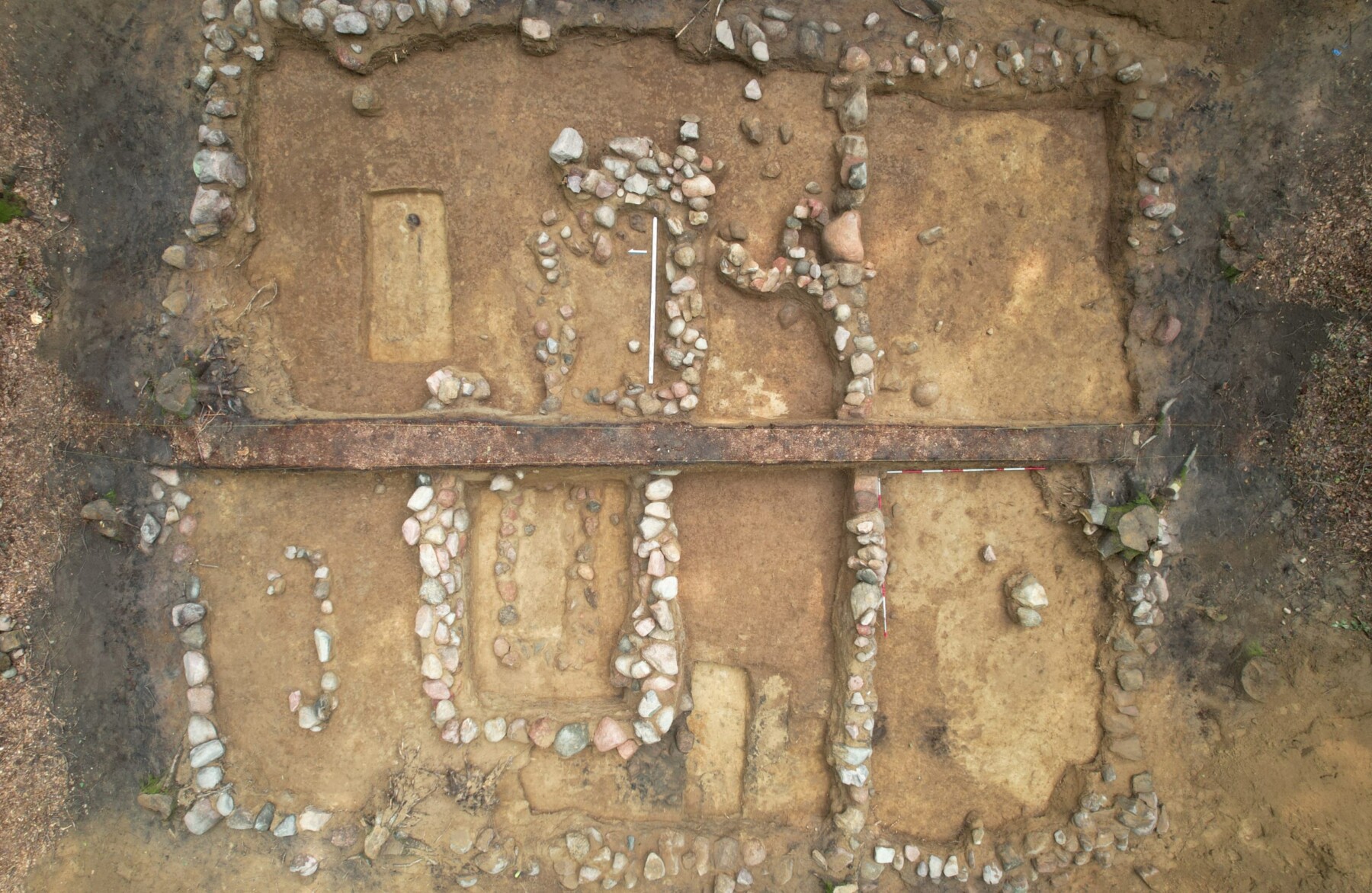Archaeological research at a cemetery near Nowy Chorów in northern Poland, dating to the first half of the 11th century, has revealed a complex burial system combining Christian and pagan elements. The excavations revealed a combination of inhumation and cremation burials, together with high-status grave goods and indications that certain graves were disturbed and reopened.
The results of this fascinating archeological exploration, initiated in 2022, conducted by researchers from the University of Warsaw and Nicolaus Copernicus University, have been published in the prestigious academic journal “Antiquity”.
The Christianisation of Slavs
The site contains 16 rectangular earthen burial mounds with stone enclosures, which represent unique funeral practices from the region’s Christianisation period. The Christianisation of Poland, officially beginning with Duke Mieszko I’s baptism in 966 AD, initiated a lengthy process of converting the entire population.
Slavic rituals in Poland were combined with Christianity for a very long time and some early Slavic practices persisted for many years after baptism, continuing until the 14th century, whilst in several regions some practised until the early 20th century.
The excavations revealed a complex burial system combining Christian and pagan elements. In burial mound K8, eight burials were discovered –six inhumations and two cremations, all oriented along an east-west axis with heads pointing eastward, which deviates from the Christian tradition of westward orientation.
The key findings
The central grave (designated number 7) stood out with its monumental dimensions (5.2 × 3.6 metres) and double stone setting, containing a spearhead with textile remnants and a unique yew bucket with iron fittings.
Researchers indicate that the most fascinating discovery is the first documented case in the region of grave reopening. Two skeletal burials were exhumed and subjected to cremation, probably before complete decomposition of the body (as evidenced by characteristic bone fractures). The cremated remains were placed directly above the emptied skeletal graves, suggesting a complex ritual for the deceased’s transition to the afterlife.
Pre-Christian religious symbolism
Early Slavic beliefs constituted a complex polytheistic system based on harmony with nature and the worship of elemental forces, including Svarog (god of sky and sun), Perun (lord of thunder and war), Veles (protector of cattle and the dead), and fertility goddesses such as Mokosh. The Slavs venerated ancestral spirits, believed in numerous household and forest demons (domovoi, rusalka, vila), and their religiosity was expressed through rituals connected to natural cycles.
In two burial mounds, three-armed stone symbols were discovered, which may reference the triquetra and the three-headed Pomeranian god Triglav, one of the most important deities in Pomeranian Slavic religion, ruler of heaven, earth and the underworld. This symbolism probably reflects pre-Christian beliefs and may have served as protection or to counterbalance Christian burial rituals.
The research demonstrates that the Christianisation process in Pomerania was far more complex than a simple division between Christianity and paganism, representing rather diverse and nuanced cultural transformations. Planned DNA analyses aim to answer questions regarding family connections amongst the buried individuals and patterns of social organisation.
More:
- Wadyl S, Szczepanik P, Fetner R, Jaskulska E, Nowosadzka I. Nowy Chorów Project: funerary practices associated with rectangular burial mounds in early medieval Pomerania. Antiquity. Published online 2025:1-9. doi:10.15184/aqy.2025.10142
- National Geographic



